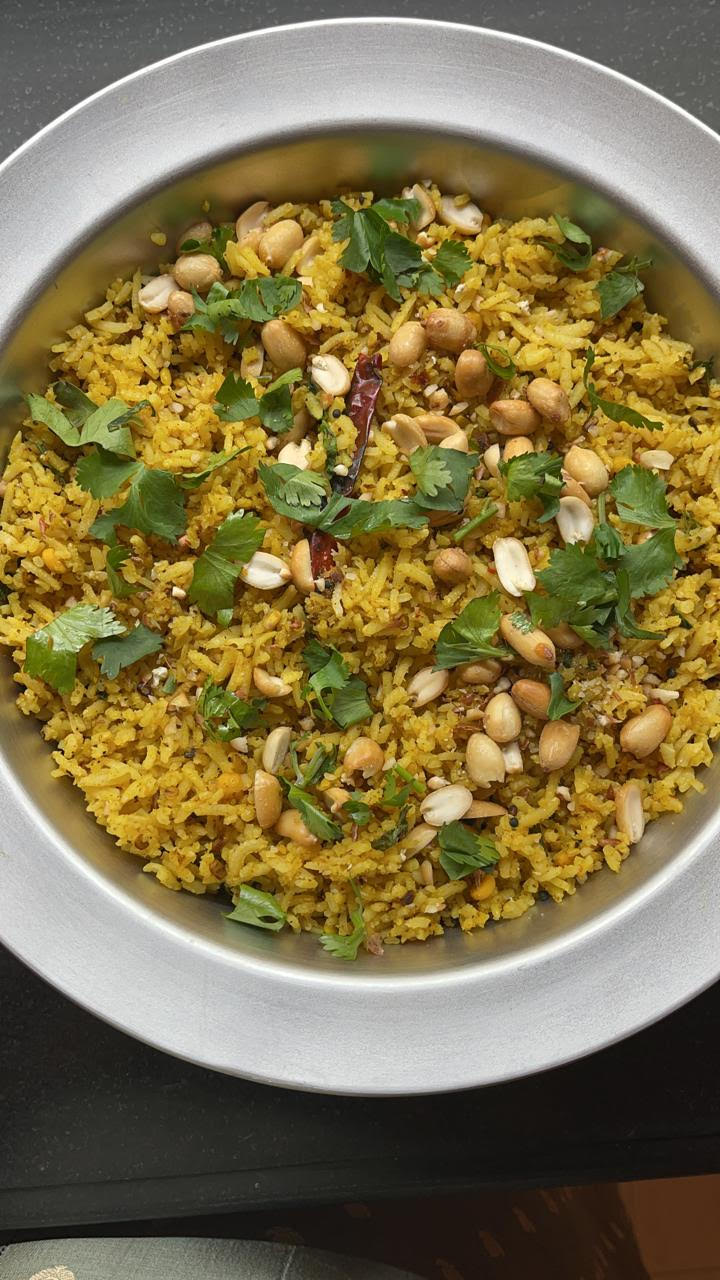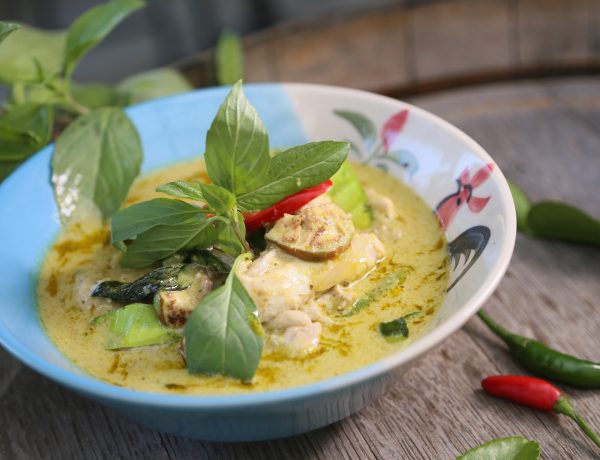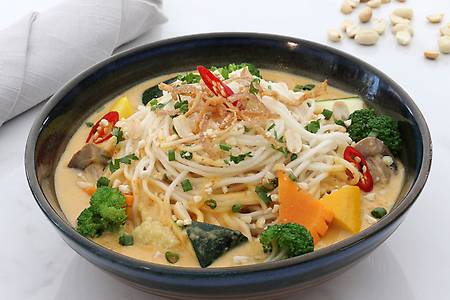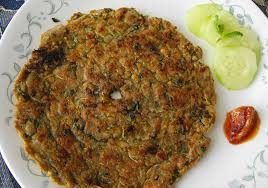Unleash Your Taste Buds with Pulihora: A Tangy and Tantalizing South Indian Delight
Get ready to embark on a flavorful journey through the southern regions of India with the delectable Pulihora. This traditional dish, also known as Tamarind Rice, is a vibrant and tangy rice preparation that will awaken your senses and leave you craving its zesty flavors.
Hailing from the land of spices and rich culinary heritage, Pulihora holds a special place in South Indian cuisine. It is often prepared during festive occasions, religious celebrations, or as a delightful offering to the gods. But don’t let its sacred origins fool you—this dish is equally loved for its mouthwatering taste and versatility.
The heart and soul of Pulihora lie in its tangy tamarind-based flavor profile. The rice is cooked to perfection and then gently tossed with a blend of aromatic spices such as mustard seeds, curry leaves, turmeric, and asafoetida. The real star of the show, however, is the tamarind paste. Its tanginess brings a burst of flavors that dance on your palate, creating a symphony of sweet, sour, and spicy sensations.
To enhance the texture and taste, Pulihora is often adorned with a medley of crunchy ingredients. Roasted peanuts, cashews, and sesame seeds add a delightful nuttiness, while the vibrant pops of flavor from split chickpeas and dried red chilies provide a playful contrast. These elements not only add a satisfying crunch but also elevate the overall sensory experience.
One of the wonders of Pulihora lies in its ability to cater to various dietary preferences. While the traditional recipe typically uses white rice, you can easily adapt it to incorporate healthier alternatives like brown rice or quinoa. It can also be customized by adding vegetables like carrots, beans, or peas, infusing the dish with additional colors, textures, and nutritional value.
Pulihora is not just a feast for the taste buds, but it also offers a multitude of health benefits. Tamarind, the star ingredient, is rich in antioxidants and known for its digestive properties. The combination of spices used in Pulihora, including turmeric and asafoetida, is believed to have anti-inflammatory and digestive benefits as well.
Whether served as a main course, packed in lunch boxes, or offered as prasad (blessed food) in temples, Pulihora is an irresistible dish that embodies the soul of South Indian cuisine. Its tangy and tantalizing flavors, coupled with its vibrant appearance, make it a feast for both the eyes and the taste buds.
So, unleash your taste buds and allow Pulihora to transport you to the colorful streets of South India. Experience the perfect balance of flavors and textures in each mouthful, as you savor the tanginess and relish the zesty symphony of this traditional rice delicacy.
Pulihora is a very easy recipe and can be cooked by an amateur too. I generally make it when I get bored of cooking an elaborate meal or when I run out of vegetables. I just love this recipe as it can be prepared quickly and served as a one-pot meal too along with some papad if you wish. You can also carry it in your lunch box or while traveling on a long-distance journey. My mom used to always carry this dish while we traveled. I fondly cherish those memories.
How To Make Pulihora Recipe At Home?
Firstly we will learn
How to Make the Pulihora Powder Recipe
INGREDIENTS
½ tsp mustard seeds
1 tsp urad dal
1 tsp chana dal
½ tsp cumin seeds
½ tsp coriander seeds
¼ tsp fenugreek seeds (methi seeds)
1 tsp sesame seeds
2 dried whole red chili
Method to make the masala powder
- In a heavy bottom steel pan, dry roast all the ingredients till you get a nice aroma.
- Let it cool completely and grind it to a fine powder.
Pulihora powder is ready to use.
Pulihora Recipe Step-by-Step
INGREDIENTS
1 tsp mustard seeds
1 tsp urad dal
1 tsp chana dal
3 tbsp roasted peanuts
2 dried whole red chili
Pinch of asafoetida
5-7 curry leaves
½ cup tamarind extract
½ tsp turmeric powder
Salt to taste
2 cups of cooked brown rice
INSTRUCTIONS
Preparation for Pulihora
How to cook rice for Pulihora – Add brown rice to a bowl and rinse it thoroughly with water. Add 2-3 cups of water as per the type of rice you are using and pressure cook it for 2-3 whistles on a medium flame. When the pressure settles, transfer the rice to a plate and spread it so that it cools fast and does not stick to each other. Ensure that the texture of the rice is grainy and not mushy.
How to make Tamarind extract – Take a small lemon size ball of tamarind and rinse it with water. Pour hot water to immerse it and leave it for some time. When it gets soft, squeeze the tamarind and extract the water out of it. Filter the water to get a clean extract without impurities.
Method
- Heat a heavy bottom steel pan, add the mustard seeds, urad dal, and chana dal first. Dry roast till the seeds start spluttering.
- Add red chilies, peanuts, and curry leaves and roast it for one more minute.
- Add the tamarind extract, salt, jaggery powder, and turmeric powder. Let it boil for 15 minutes.
- Add the prepared masala powder and boil it for 2 minutes. The extract will start thickening.
- Add the cooked rice and mix it gently making sure the rice is well combined with the tamarind paste.
- Add more peanuts if required.
- Enjoy the temple-style Pulihora without oil.
Do check out other interesting recipes on our blog.
NOTE:
- Generally, people put in a lot of oil to make pulihora. Here we have made the oil-free version of it.
- Instead of rice, you can use foxtail millet too.
Tips To Make Pulihora
- The cooked rice should be grainy and not mushy. Slightly aged rice is better for this recipe so that the rice gets cooked in a grainy manner. While cooking rice, adjust the quantity of water as per the type of rice you are using. Use small-sized rice like HMT kolam rice or Sona Masoori rice. Avoid using long-grained basmati rice. The small-sized rice looks good and the small rice mixes well with the tamarind sauce than the long-grained one.
- Always soak, rinse, and filter the tamarind extract so that you can get a clean extract without the unwanted hairy fiber of the tamarind.
- You can pre-make the tamarind sauce and the pulihora powder. Store the tamarind sauce in the refrigerator. Pulihora powder can be stored in an airtight container at room temperature. It can stay fresh for at least 10 days. As and when required you just have to heat the pan, add the tamarind sauce, pulihora powder, and the cooked rice, and mix it gently.
Pulihora, the tangy and tantalizing South Indian delight, offers a culinary experience that is nothing short of extraordinary. From its vibrant flavors and aromatic spices to its versatility and cultural significance, this dish has captured the hearts and palates of food enthusiasts worldwide.
Whether enjoyed during festive occasions, shared with loved ones, or savored as a comforting meal, Pulihora brings people together and ignites a sense of joy and celebration. Its tangy tamarind notes, combined with the subtle heat of spices and the crunch of nuts, create a harmonious symphony of flavors that is both invigorating and comforting.
With its adaptability to various dietary preferences and the potential for creative additions, Pulihora can be personalized to suit your taste and nutritional needs. Its health benefits, stemming from the wholesome ingredients and traditional spices, make it a wise choice for those seeking a flavorful yet nourishing meal.
So, whether you are a seasoned fan of South Indian cuisine or a curious food explorer, Pulihora beckons you to embark on a culinary adventure that will awaken your senses and leave you craving for more. Indulge in the vibrant flavors and embrace the cultural heritage of this tangy rice delicacy.
Experience the magic of Pulihora and let it transport you to the colorful streets of South India with every mouthwatering bite.
Do try this recipe and let me know in the comments section how you liked it and do not forget to share it with your family and friends.





No Comments